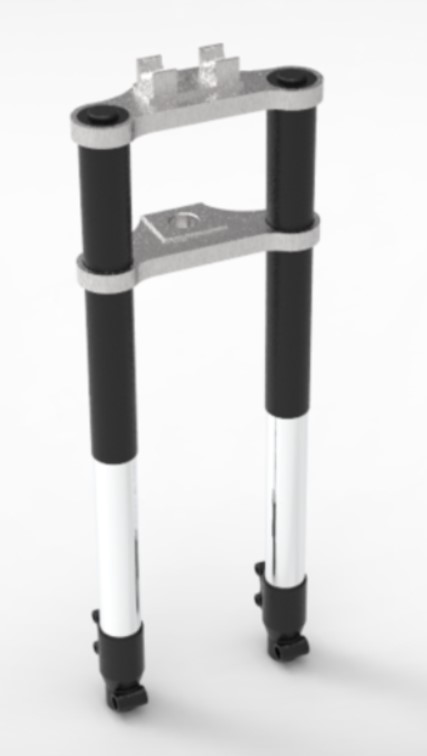Performance & Durability
- Service life: Inverted fork springs last about 22% longer (~450,000 vs. 350,000 cycles).
- Dynamics: Lower unsprung mass improves braking, acceleration, and overall ride stability.
For a Machine Components Design course, our team set out to compare two common motorcycle suspension systems: the traditional upright fork and the modern inverted fork. The goal was to determine which design performs better in terms of strength, durability, and cost-effectiveness. Motorcycle forks are critical for handling, comfort, and rider safety. Since inverted forks are becoming more popular on performance bikes, we wanted to evaluate if the added cost was justified by measurable performance benefits.
We focused on the spring inside the fork, as it is the component most responsible for shock absorption and stability.

| Mechanical Parameter | Standard Fork | Inverted Fork |
|---|---|---|
| Mean Stress (MPa) | 424.75 | 306.08 |
| Operating Point (MPa) | 241.3 | 211.12 |
| Cycles @ Maximum Deflection | 350,000 | 450,000 |
| Spring Material | Advantages | Density (kg/m³) | Elastic Modulus (GPa) | Yield Strength (MPa) | Suggested Manufacturing Method | Average Cost |
|---|---|---|---|---|---|---|
| Grade 302 Stainless Steel |
- Demonstrates good resistance to solvents and several chemicals - High ease of fabrication when annealed |
7889 | 193 | 275 | Cold coiling: pre-tempered material pulled through rollers and then coiled around a mold. | $1.10–$2.50/kg |
| High Strength Carbon Alloy (AISI 1050 Carbon Steel) |
- Better mechanical properties than low-carbon steels - High hardness and strength while retaining ductility |
7861 | 205 | 580 | Hot winding followed by induction tempering | $2.00–$2.50/kg |
| Chrome Silicon Steel |
- High tensile strength properties beyond superalloys, high resilience to impact - Ideal for high performance race bikes |
7861 | 207 | 630 | Hot winding followed by tempering heat treatment | $1.80–$2.90/kg |
| 6150 Chrome Vanadium Alloy Steel |
- Superior toughness and ductility - Excellent fatigue resistance for larger diameter springs |
7833 | 205 | 415 | Cold or hot winding followed by powder coating post processing to increase durability | $2.20–$3.00/kg |
| Titanium |
- Exotic non-ferrous material used in high performance bikes - High strength-to-weight ratio making it strong, lightweight, and durable |
4816 | 91 | 825 | Cold winding followed by shot peening for enhanced fatigue resistance | $110/kg |